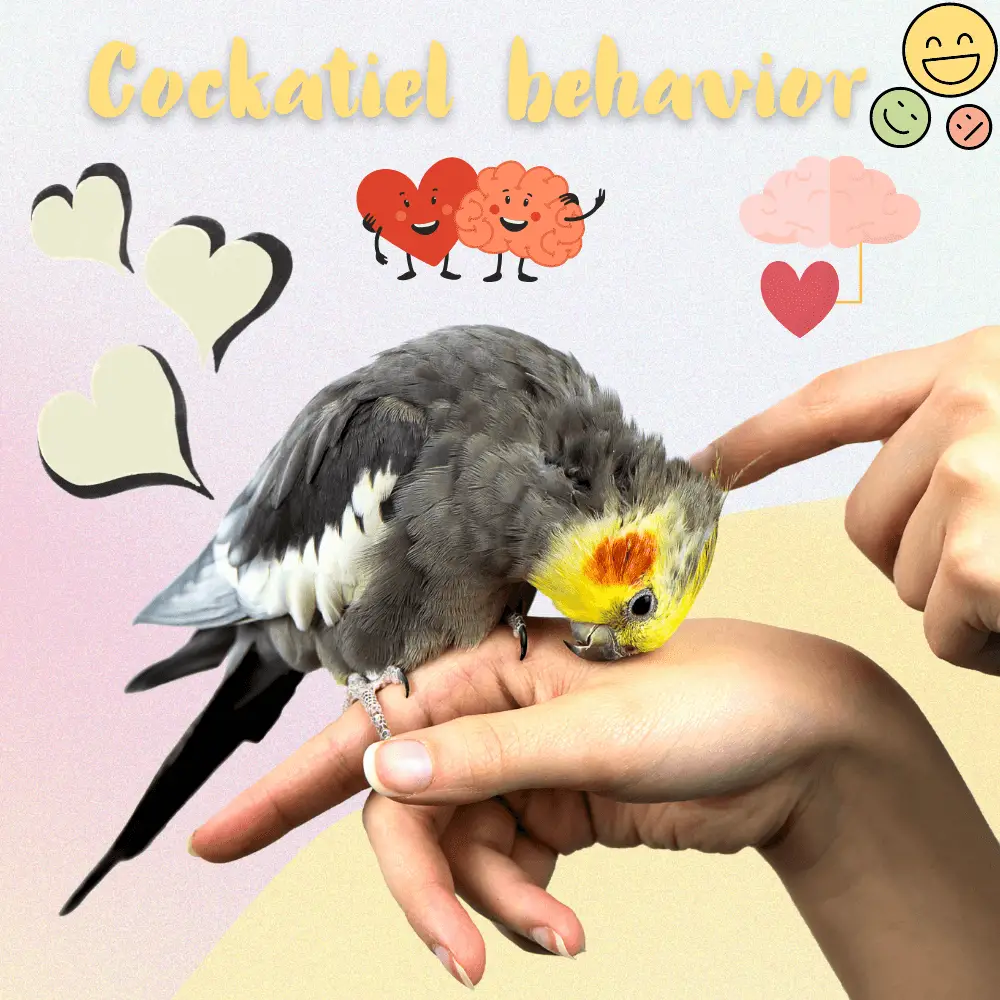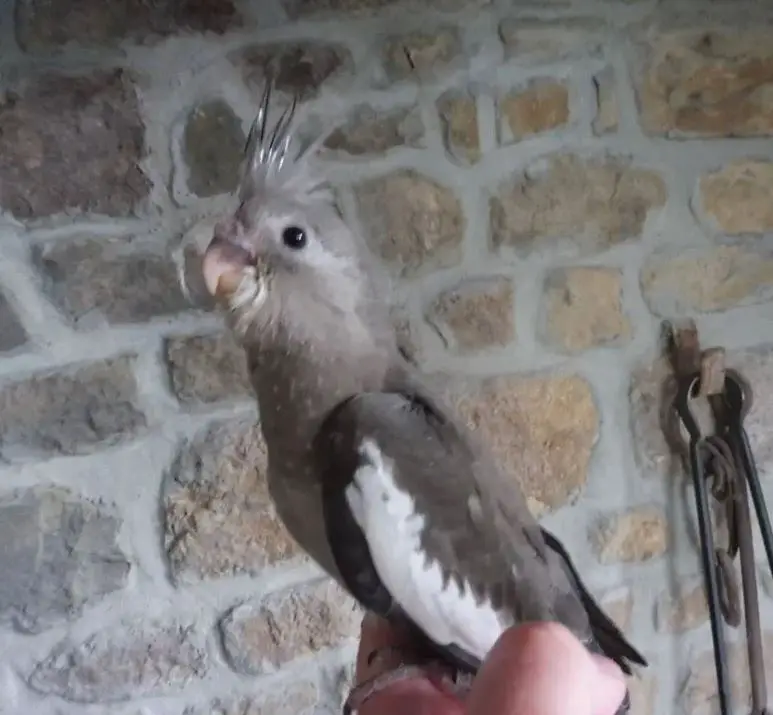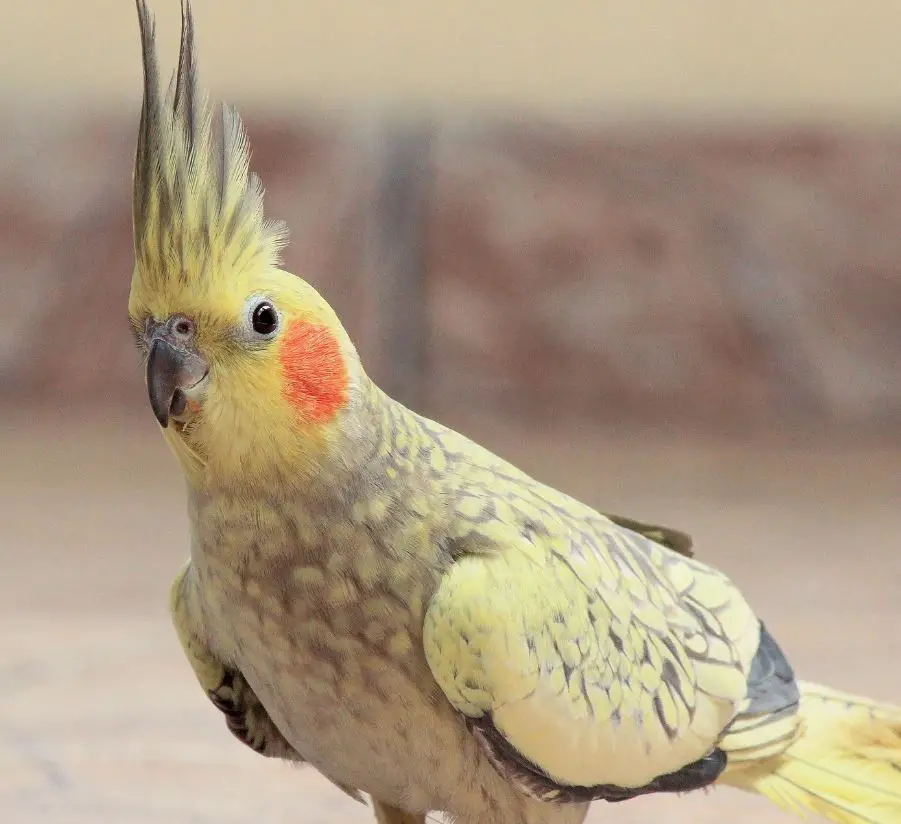How to tame cockatiel: you can enjoy its amazing ability to play, caress, or even dance to the music, but it will definitely take some time and effort to get to this point. When taming a Cockatiel, this process must be done slowly; Make sure to train him in short sessions and in a quiet area. If you have a young cockatiel, you may be more fortunate, as they are able to train better and over a faster period of time.

Be calm and don’t get excited about your new cockatiel
You should not begin taming until after he has spent several weeks with you and is used to his new environment. Put the cockatiel in a quiet place.
Talk to the cockatiel from outside the cage
You can talk about anything you like, as long as you speak in a calm voice without sudden changes in tone. Also try to speak softly, not loudly. go down to parrot level; That is, slightly above his eye level if you are taller than the cage, in order to be in a position that does not pose a threat to the parrot, but at the same time without appearing submissive. Do this for a few days before you start taming the bird.
Make sure the bird feels comfortable around you
At some point, the bird will become accustomed to your voice and may approach you when you sit across from it to talk to it. At this point, you can start training the parrot, but very slowly.
Offer the cockatiel a food reward
Millet is popular for cockatiel training because birds are very fussy eaters, but you can use just about any cockatiel food in small quantities. Place it on your hand through the fence of the cage, but not directly in front of the Cockatiel’s face. This encourages the cockatiel to move toward you willingly. Be persistent so he can peck the food once or twice or let him eat it for five seconds when you do an unusually good behavior.
- Use millet or any food treat of your choice only as a reward. Cockatiels may become less excited if you offer them the same type of food outside of training.
- Even if your baby parrot likes to play with you and seems happy, don’t keep the session longer than 15 minutes, as your baby parrot needs to come back to its cage frequently to eat and relax.
How to Hand Train a Cockatiel

Open the cage when your cockatiel is comfortable with you
After the bird becomes comfortable with you, it will be able to stay calm near you and may eat food directly from your hand. This can take weeks or months for an adult bird that is not used to interacting with humans. When you reach this stage, you may be able to coax your Cockatiel out of the cage, although some older birds that have not been socialized may not do so voluntarily.
- Make sure all doors and windows in the room are closed and that no other pet is present before opening the cage.
Keep moving your hand close to the bird during training sessions
- Cockatiels may use a biting technique to steady your hand. So don’t move or move your hand if your cockatiel is touching it with its beak.
Train your cockatiel to descend and scale
When the bird can climb onto your finger when commanded to do so, train it to come down to another perch in the same way. Reinforce this behavior by training him to step or repeat going up from your left hand to your right hand and back again. Train the bird to perform these movements daily, so that it can do so on command without offering a food reward.
- You may not need a special command to scale. Repeat the command: “Go up.”
Train your Cockatiel with other tricks

Consider clicker training
As training becomes more complex, the bird may find it difficult to determine why a food reward is being given. Use the clicker or do something special, like a short pen-pulling sound, every time the bird performs good behavior. This makes the bird more alert when taking the treat. Once the bird is well trained, you can use a clicker or pen as a reward, though a food reward is still a necessary part of training.
- It is preferable to use a clicker or a distinct sound in addition to the verbal command, as it is the same every time and is most likely not exposed to by the bird away from training sessions.
Continue to use the clicker for other trick drills
- Male cockatiels are able to imitate more sounds than females as a result of using difficult sounds to call out to their mates. However, this does not negate the ability of female cockatiels to speak, although their voices seem somewhat unclear.
- Most cockatiel parrots can talk at about eight months of age, but it is possible to start training them at four months of age if the bird seems interested. An adult bird that is not used to talking can be difficult to train.
Encourage the bird to whistle and dance
Dealing with biting behavior

Avoid engaging in biting behavior
If the cockatiel bit you, try to keep your reaction to a minimum. Acting violently, screaming, or ending the taming sessions may encourage the cockatiel to bite again. Prevention is better than cure; It can be difficult to avoid your reaction due to the intense pain of the bite, so try to avoid serious bites from the start by leaving him alone when hissing or extending his head.
- Wear thick gloves if you are bothered by budgie bites.
Don’t try to punish the cockatiel
Cockatiels usually can’t understand what you’re trying to do when you’re punishing them. He may enjoy you yelling at him, putting him back in his cage, or a similar reaction to his bad behavior.
Pet your cockatiel only if it’s calm
- Be sure to train the bird in a quiet place with only two people around you to avoid distraction.
- Cockatiels test objects they grab with their beak and tongue. If he lifts the front of his head in half and explores with his beak instead of closing it, this behavior is a sign of curiosity, not hostility.
- be patient; It’s not the bird’s fault if it bites, so never blame the bird. The bird bites as a result of your behavior that does not suit it or as a result of your haste. With good training, a Cockatiel may become a good companion
SOURCE: African Grey Parrot Pet

